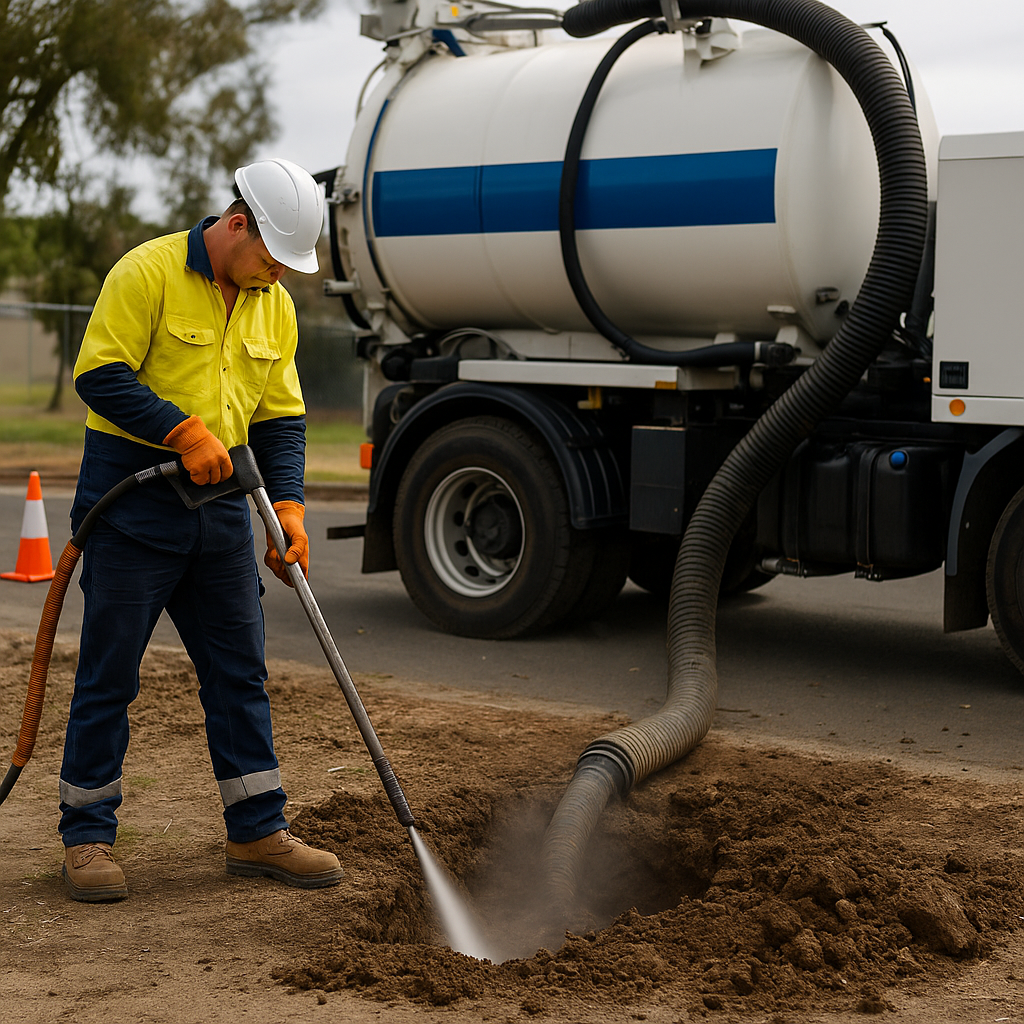
When small business owners plan construction, upgrades, or minor site work, few anticipate how quickly underground issues can derail a project. From fibre optic cables to water mains, a single accidental hit may trigger costly delays, insurance claims, and frustrated neighbours. That’s where Hydro Excavation steps in—offering a safer, cleaner and far more precise approach to breaking ground.
This article explains what hydro excavation involves, why it matters for businesses, and how to reduce risks before your next site-based job even begins.
What Is Hydro Excavation?
Hydro excavation is a method of digging that uses high-pressure water to break up soil, which is then vacuumed into a debris tank. Unlike mechanical excavation—which uses heavy equipment like backhoes or augers—this approach is non-invasive and allows for pinpoint accuracy.
The primary benefit is control. Because water is the cutting tool, operators can expose underground infrastructure without damaging it. The vacuum system keeps the site clean and reduces the risk of damaging pipes, electrical conduits, or telecommunications lines.
This makes hydro excavation ideal for tight or congested worksites, especially where traditional digging methods may be too risky or messy.
Why Should Small Business Owners Care?
Many small businesses operate from premises built decades ago, with underground services that may not be well-mapped. This is especially true for those leasing retail spaces or retrofitting older buildings.
Whether you’re installing new signage, upgrading plumbing, or preparing for outdoor improvements, hydro excavation may offer a much safer approach than traditional trenching.
For instance:
-
A café owner upgrading their grease trap may need access to underground plumbing located near the footpath.
-
A retail shop installing new signage may need post holes dug near electricity mains.
-
A local clinic adding new fencing may be concerned about shallow gas or water lines on the boundary.
In each of these examples, non-destructive digging with hydro excavation may help avoid unexpected service outages, costly repairs, or worse—an insurance headache.
Learn more about non-destructive digging with hydro excavation
Business Scenarios Where Hydro Excavation Makes Sense
1. Signage and Pole Installation
Whether you're installing illuminated signage, shade sails, or security cameras, footings need to be set securely. But if those holes are being dug near underground power or fibre lines, the consequences of a mistake can be substantial.
Hydro excavation offers a far more controlled option for post-hole or footing installation, especially on narrow footpaths or near car parks.
2. Plumbing or Drainage Upgrades
Businesses like hair salons, medical centres, and restaurants often need to modify drainage or plumbing. Hydro excavation allows clean trenching around sensitive structures, without the backfill mess or vibration risks of heavy machinery.
3. Carpark Works and Surface Modifications
Need to run conduit across your lot or improve stormwater drainage? This method ensures trenching is precise and avoids surface scarring that mechanical digging often leaves behind.
Compliance and Legal Responsibilities
Many business owners are aware of Dial Before You Dig (DBYD) services—but mistakenly assume that a DBYD plan is a guarantee. It’s not. While it gives a general overview, it may not accurately reflect what lies beneath your premises.
Hydro excavation offers a legal safety net. It shows that you took proactive steps to locate and protect underground infrastructure. That may help satisfy insurers or Work Health & Safety obligations in the event of an incident.
By incorporating safer excavation practices, you’re also improving your compliance posture—particularly if your works are subject to local council permits or engineering sign-offs.
Cost vs Risk: Is It Worth It?
Hydro excavation may cost more than a hand dig or small excavator upfront—but it’s a short-term expense that protects you from long-term issues.
Consider this:
-
Accidentally rupturing a gas line may lead to site evacuation and emergency call-outs.
-
Damaging an NBN cable could disrupt your own business and neighbouring tenancies.
-
Even minor water leaks from a punctured pipe may lead to slab erosion or foundation problems.
By contrast, hydro excavation is typically completed faster, with less backfill required and a cleaner site ready for follow-on work. For projects that need a tight turnaround—like overnight installations or short-term shutdowns—this is a serious advantage.
How to Choose the Right Hydro Excavation Provider
Before engaging a contractor, check their track record. You want a provider with:
-
Modern, well-maintained equipment
-
Experience working on small commercial sites
-
A solid understanding of local soil and underground conditions
-
Insurance coverage and SWMS (Safe Work Method Statements)
It’s also worth choosing someone local to your area, who can respond quickly and is familiar with your council’s permitting or noise-control policies.
If you're planning to document your renovation or site works on your own website, Yola’s Blog Builder is a helpful tool to share project updates with customers and maintain SEO momentum during construction periods.
Planning Ahead: Combining Digital and Physical Projects
When preparing for on-site work, it's also a good time to update your digital presence. Whether you're expanding a shopfront or changing layout, having updated content on your business website boosts credibility and supports customer expectations.
You might consider updating your homepage, adding new opening hours, or even listing your site's improvements in your services section. Yola’s Small Business Tools can assist in making these changes smoothly while you manage the physical side of your upgrades.
Final Thoughts
Hydro excavation may not be the first thing that comes to mind when planning a business upgrade—but it should be high on your risk management checklist.
For small businesses dealing with signage installation, outdoor modifications, or plumbing works, this method offers a cleaner, safer, and often faster approach. With minimal risk to underground assets, you’re protecting not only your project budget—but also your long-term operational continuity.
Before you break ground, ask yourself: do I really know what’s beneath the surface?